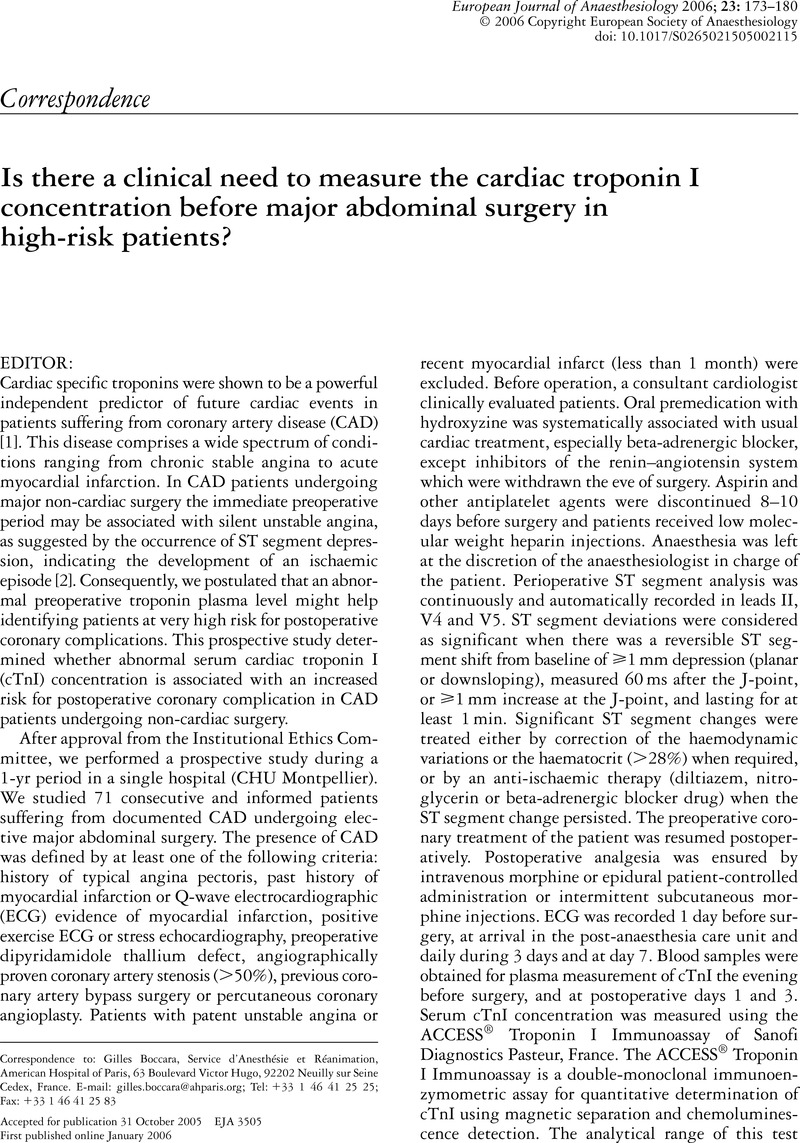Crossref Citations
This article has been cited by the following publications. This list is generated based on data provided by Crossref.
Püttgen, Hans Adrian
Pantle, Hardin
and
Geocadin, Romergryko G
2009.
Management of cardiac arrest patients to maximize neurologic outcome.
Current Opinion in Critical Care,
Vol. 15,
Issue. 2,
p.
118.
Meyer, Matthew J.
Megyesi, Joseph
Meythaler, Jay
Murie-Fernandez, Manuel
Aubut, Jo-Anne
Foley, Norine
Salter, Katherine
Bayley, Mark
Marshall, Shawn
and
Teasell, Robert
2010.
Acute management of acquired brain injury part I: An evidence-based review of non-pharmacological interventions.
Brain Injury,
Vol. 24,
Issue. 5,
p.
694.
Agbeko, Rachel S.
Pearson, Sean
Peters, Mark J.
McNames, James
and
Goldstein, Brahm
2012.
Intracranial pressure and cerebral perfusion pressure responses to head elevation changes in pediatric traumatic brain injury*.
Pediatric Critical Care Medicine,
Vol. 13,
Issue. 1,
p.
e39.
Hallman, Matthew R.
and
Joffe, Aaron M.
2013.
ICU Management of Traumatic Brain Injury.
Current Anesthesiology Reports,
Vol. 3,
Issue. 2,
p.
89.
Alarcon, Jose D
Rubiano, Andres M
Okonkwo, David O
Alarcón, Jairo
Martinez-Zapata, Maria José
Urrútia, Gerard
and
Bonfill Cosp, Xavier
2017.
Elevation of the head during intensive care management in people with severe traumatic brain injury.
Cochrane Database of Systematic Reviews,
Vol. 2017,
Issue. 12,
Kreitzer, Natalie
and
Woo, Daniel
2018.
Stroke Revisited: Hemorrhagic Stroke.
p.
91.
Unnerbäck, Mårten
Ottesen, Johnny T.
and
Reinstrup, Peter
2019.
Increased Intracranial Pressure Attenuates the Pulsating Component of Cerebral Venous Outflow.
Neurocritical Care,
Vol. 31,
Issue. 2,
p.
273.
Gruenbaum, Shaun E.
Sandhu, Mani Ratnesh S.
Bilotta, Federico
and
Kurup, Viji
2019.
Co-existing Diseases and Neuroanesthesia.
p.
63.
Cho, Sung-Min
Farrokh, Salia
Whitman, Glenn
Bleck, Thomas P.
and
Geocadin, Romergryko G.
2019.
Neurocritical Care for Extracorporeal Membrane Oxygenation Patients.
Critical Care Medicine,
Vol. 47,
Issue. 12,
p.
1773.
Lang, Shih-Shan
Valeri, Amber
Zhang, Bingqing
Storm, Phillip B.
Heuer, Gregory G.
Leavesley, Lauren
Bellah, Richard
Kim, Chong Tae
Griffis, Heather
Kilbaugh, Todd J.
and
Huh, Jimmy W.
2020.
Head of bed elevation in pediatric patients with severe traumatic brain injury.
Journal of Neurosurgery: Pediatrics,
Vol. 26,
Issue. 5,
p.
465.
Goldberg, Miriam A.
Hochberg, Leigh R.
Carpenter, Dawn
and
Walz, J. Matthias
2021.
Development of a Manually Operated Communication System (MOCS) for patients in intensive care units.
Augmentative and Alternative Communication,
Vol. 37,
Issue. 4,
p.
261.
Wunna Htay, Soe
2022.
Trauma and Emergency Surgery.
Khanduja, Shivalika
Kim, Jiah
Kang, Jin Kook
Feng, Cheng-Yuan
Vogelsong, Melissa Ann
Geocadin, Romergryko G.
Whitman, Glenn
and
Cho, Sung-Min
2023.
Hypoxic-Ischemic Brain Injury in ECMO: Pathophysiology, Neuromonitoring, and Therapeutic Opportunities.
Cells,
Vol. 12,
Issue. 11,
p.
1546.
Singh, Amandeep
and
Jefferson, Jamal
2023.
Post-Cardiac Arrest Care.
Emergency Medicine Clinics of North America,
Vol. 41,
Issue. 3,
p.
617.
Yang, Jason
Ruesch, Alexander
and
Kainerstorfer, Jana M.
2023.
Cerebrovascular impedance estimation with near-infrared and diffuse correlation spectroscopy.
Neurophotonics,
Vol. 10,
Issue. 01,
Long, Brit
and
Gottlieb, Michael
2025.
Emergency medicine updates: Managing the patient with return of spontaneous circulation.
The American Journal of Emergency Medicine,
Vol. 93,
Issue. ,
p.
26.



